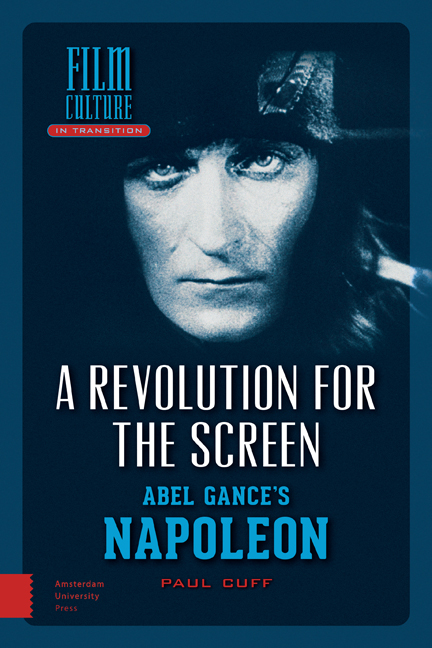Book contents
- Frontmatter
- Dedication
- Contents
- List of Illustrations
- Note on Formatting
- Acknowledgements
- Foreword
- Preface: Critical perspective
- 1 Napoleonic Ambition and Historical Imagination
- 2 Shaping Expectations: The Young Napoléon Bonaparte
- 3 Civilization and Savagery: Visions of the French Revolution
- 4 Mortal Gods: Voices of Power and of Providence
- 5 The Dark Light of Napoleonic Cinema
- 6 A View from the Margins of History
- 7 Melodrama and the Formulations of Family
- 8 Worlds in Transition: Class, consumption, Corruption
- 9 Death and Transfiguration
- Conclusion: The Case for Enthusiasm
- Filmography and Bibliography
- Index
- Film Culture in Transition
5 - The Dark Light of Napoleonic Cinema
Published online by Cambridge University Press: 10 December 2020
- Frontmatter
- Dedication
- Contents
- List of Illustrations
- Note on Formatting
- Acknowledgements
- Foreword
- Preface: Critical perspective
- 1 Napoleonic Ambition and Historical Imagination
- 2 Shaping Expectations: The Young Napoléon Bonaparte
- 3 Civilization and Savagery: Visions of the French Revolution
- 4 Mortal Gods: Voices of Power and of Providence
- 5 The Dark Light of Napoleonic Cinema
- 6 A View from the Margins of History
- 7 Melodrama and the Formulations of Family
- 8 Worlds in Transition: Class, consumption, Corruption
- 9 Death and Transfiguration
- Conclusion: The Case for Enthusiasm
- Filmography and Bibliography
- Index
- Film Culture in Transition
Summary
When a man moves into the light he casts a shadow: to become a source of light is to create darkness. Where is the man who does not cast a shadow? What god alike doesn't throw his giant shadow over the other gods? Where is the new god who would not cast a shadow? And isn't it in the sun itself that we must find ourselves? (Gance 1930: 36)
Introduction
The iconic protagonist of NAPOLÉON continues to invite bizarrely divergent interpretations. For Norman King, Gance never questions ‘the unity of [Bonaparte’s] character’ (1984a: 137); conversely, Richard Abel argues the film continually ‘tests’ its hero ‘to the brink of incoherence’ (1984: 441); whilst for Pauline Kael, NAPOLÉON is merely ‘fantasist […] gush’ – inspired not by politics but by creative ‘lunacy’ (1984: 142-5). This chapter counters such claims and aims to demonstrate the operation of a coherent ideology throughout NAPOLÉON. After providing a historiographic context for the debate, I proceed to explore Gance's representation of Bonaparte across the film. From the boyhood fights at Brienne to the adult victories at Toulon and Montenotte, I argue that Gance's extensive range of leitmotifs produces a deliberately ambiguous and antithetical portrait of its cinematic hero. By counterbalancing moments of breathtaking involvement with contemplative sequences, NAPOLÉON also offers audiences a range of perspectives from which to view the historical narrative. This chapter concludes with an analysis of the triptych finale, evaluating the aesthetic and experiential impact of the most radical technological innovation in Gance's Napoleonic saga.
‘Bonaparte’ and ‘Napoléon’
Historical sympathy for Napoléon often hinges on the transition from Revolution to Empire. After the Terror ended with the fall of Robespierre in 1794, executive power in France was held by a panel of five ‘directors’. During 1798-9, this ‘Directory’ government entered a period of crisis: abroad, the nation's military exploits in Egypt, Holland, and Switzerland were failing; internally, there were royalist revolts in the south and west of the country and political division in Paris. Napoléon returned from Egypt in 1799 and was encouraged to restore order by force. Following a swift coup d’état on 18 Brumaire (9 November), he abolished the Directory and thus effectively ended the era of the French Revolution.
- Type
- Chapter
- Information
- A Revolution for the ScreenAbel Gance's Napoleon, pp. 129 - 158Publisher: Amsterdam University PressPrint publication year: 2015



